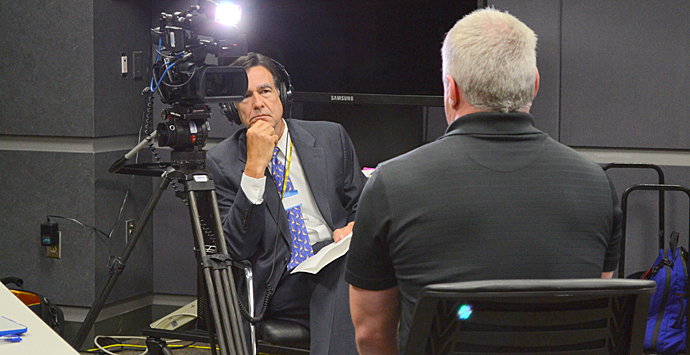


Confessions of a TV News Executive
[by Howard Fencl, APR] I’m going to let you in on a little secret. I earned my stripes in TV producing newscasts and managing newsrooms for the better part of twenty years, and I can now freely admit the following:
- I loved reporters who came trotting breathlessly back into the newsroom with video of anyone who got belligerent and pushed the camera away (more on this in another blog post).
- I loved reporters who came back to the station with interviews of people who had media training.
But wait a second, you may be saying – isn’t that counterintuitive for a news manager? What self-respecting newsperson wants canned, rote-sounding message ‘bots who refuse to answer questions?
You’re absolutely right, no one in a newsroom wants that, and if fact, I’d openly encourage reporters to immediately cut those sorts of interviews out of their stories.
I wanted to air interviews with people who could effortlessly weave a soundbite-length message into an honest answer to a question. I wanted reporters coming back with who could press “play” on their video and have a compelling, usable 10-second-or-less soundbite right at the start of their interview so they could edit their final story more quickly and make their slot in the news show. I wanted to see people speak with energy and passion on my air.
There are a few people out there who are naturally gifted – effortless interviews are a piece of cake for them. But for most of us, interviewing is an art that must be practiced. And practiced and practiced. Here are a few things to remember about doing a solid interview:
- Interviews are a very different animal than the kind of conversation we all experience every day. With interviews, you want to be certain you are armed with key messages. Messages are the “take away” you want your key audiences to have. They should be short and they should sound like a TV soundbite when you say them out loud. Have no more than two or three messages. Why so few? Because it’s impossible for people to digest a deluge of information at one time.
- Repeat messages often throughout an interview. This maximizes your chances that the reporter will select one of your messages as a soundbite to edit into their story. It does feel strange to repeat yourself over and over in an interview, but remember this is not a conversation. The reporter is editing a story and will only use one or two of your quotes – they won’t use the entire interview. Make sure the quote they use is one of your key messages.
- Don’t wait for a reporter to ask the question that elicits your messages, it may never happen. Instead, set context at the very start of an interview by saying: “Let me tell you what’s really important for your audience to know about this issue.” Then insert your priority message. This is a terrific technique that can help you control the flow of the interview – when you set context by dropping a message at the onset of an interview, the reporter’s natural inclination is to ask a follow-up question based on what they just heard you say. Suddenly, you are on your own turf and the interview becomes easier.
Do an interview correctly, and the media will likely include your messages, and that’s exactly what you want your key audiences to hear. If you walk into an interview and wing it without preparation or messages, your interview may go viral in a way you and your organization could regret for years to come.
Click here for more on media training with the Hennes Communications team.